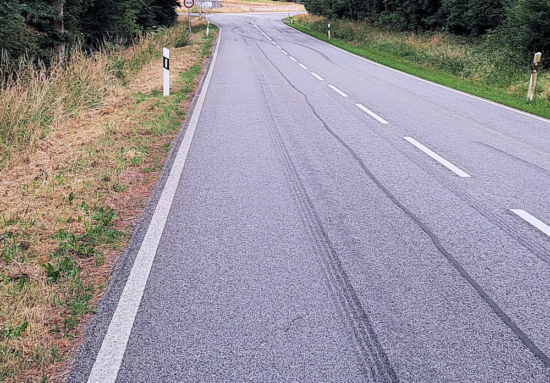UNECE adopts tyre abrasion measuring methodology
 : Measurements will involve vehicle convoys driving 8,000km on open roads and laboratory test on an abrasing rolling drum over 5,000km (Photo: Stephen Goodchild / Tyre Industry Publications Ltd)
: Measurements will involve vehicle convoys driving 8,000km on open roads and laboratory test on an abrasing rolling drum over 5,000km (Photo: Stephen Goodchild / Tyre Industry Publications Ltd)
On 8 January, the United Nations Economic Commission for Europe’s (UNECE) World Forum for Harmonization of Vehicle Regulations endorsed a proposal outlining two methodologies for assessing tyre abrasion within the framework of UN Regulation No. 117. The proposal adopted by the Working Party on Noise and Tyres and backed by the Working Party on Pollution and Energy entails measuring the reduction in tyre weight caused by abrasion, with results quantified in milligrams per kilometre per tonne of load on the tyre.
Tyres will undergo evaluation through two distinct methods: either mounted on a rolling drum and assessed over 5,000 kilometres or installed on vehicles navigating open roads. Public road testing will be conducted with meticulous attention to reproducible conditions. A convoy comprising four vehicles will traverse a total distance of 8,000 kilometres, with one vehicle equipped with reference tyres and three with candidate tyres. The convoy configuration, including vehicles and drivers, will be alternated every 500 kilometres. Approximately 200 tyres will undergo testing in this process.
The UNECE foresees the utilisation of these measurement methodologies in a market evaluation initiative, with the goal of gathering abrasion data across various tyre sizes, patterns, and brands. The Working Party would then use such data to determine tyre abrasion limits to be incorporated in UN Regulation No. 117 by September 2025 for tyres fitted to passenger cars (C1 tyres).
Euro 7 application
Once these abrasion limits are in force, tyre manufacturers will need to ensure that all the tyres sold on the market are below the set limits. For those exceeding the limits, manufacturers will need to adjust their material composition or manufacturing process.
The proposal was prepared under the leadership of France and the European Commission and will become the reference methodology of the European Union’s Euro 7 proposal.
The UNECE anticipates an extension of the measuring method to heavier vehicles with C2 and C3 type of tyres during 2026 and 2027.
As the UNECE comments, these regulations will “contribute to significantly reducing microplastic pollution.” It adds that in 2016, tyre abrasion was estimated to represent 78 per cent of the 1.3 million tonnes of microplastics entering the ocean.





Comments